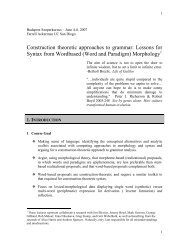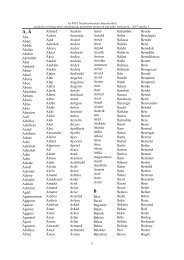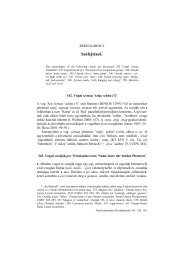Nyelvtudományi közlemények 91. kötet (1990)
Nyelvtudományi közlemények 91. kötet (1990)
Nyelvtudományi közlemények 91. kötet (1990)
Sie wollen auch ein ePaper? Erhöhen Sie die Reichweite Ihrer Titel.
YUMPU macht aus Druck-PDFs automatisch weboptimierte ePaper, die Google liebt.
242 BO WICKMAN<br />
can be no doubt that the partitive is a genuine object case, but in Mordvin<br />
it is not quite so evident the the ablative is to be regarded as an object case,<br />
although a Mordvin sentence liké simán vette 'I drink water' corresponds<br />
exactly in its construction to the Finnish sentence juon vettä with the same<br />
meaning. Both the ablative and the inessive are predominantly local cases in<br />
Mordvin, whereas in Finnish the partitive has lost most of its original local<br />
function. An interesting discussion is given by Lars-Gunnar Larsson (1983.<br />
121-129) in connection with the object in Mordvin. He gives an example<br />
from Swedish, where the sentence han âter pá en smorgas means 'he is<br />
eating a sandwich' but has the word-for-word construction 'he eats on a<br />
sandwich'. Larsson says that it is difficult even for a native Swedish linguist<br />
to décide whether the phrase pá en smorgas constitutes an object or not. In<br />
my opinion this décision is not difficult at ail, because I do not think that<br />
a prepositional phrase can be regarded as an object. It can thus be said<br />
that in a case of this kind I attach more importance to the formai than to<br />
the semantic point of view. I am rather inclined to take the same stand in<br />
the Mordvin question and to call the ablative and inessive constructions in<br />
question adverbials rather than objects, although I am quite aware that the<br />
opposite opinion is also quite reasonable from some points of view.<br />
A rather curious case of semantic considérations as opposed to formai<br />
ones is found in the so-called accusative II in traditional Finnish grammar,<br />
which is both historically and synchronically identical with the nominative<br />
singular. This stem form without any ending, e.g. kala 'fish', is in traditional<br />
Finnish grammar called accusative II when it lias the function of an object,<br />
e.g. in the imperative sentence syö kala! 'eat the fish!' The way of reasoning<br />
was evidently that here we hâve to do with an object, and an object should<br />
be in the accusative, and therefore the nominative singular was called accusative<br />
II in order to distinguish it from the 'real' accusative of the type<br />
kalan. And this terminology became traditional and has survived to our<br />
days.<br />
The Uralic separative, which has become the Mordvin ablative and the<br />
Finnish partitive, has in Lappish become the accusative in the plural. As<br />
to the functions of this accusative plural, it has preserved only rudimentary<br />
features of its earlier partitive function in cases like mi nieidâid 'which girl,<br />
what girl', originally 'which of the girls'. It is indeed very interesting to note<br />
that in the plural the partitive lias developed into an object case and thus<br />
become an accusative, whereas in the singular the partitive has disappeared<br />
altogether as a case of the object. Erkki Itkonen (1972) lias shown with the<br />
aid of Lappish texts from the 17th and 18th centuries that this is a rather<br />
new development and that in the old texts the partitive still functioned as<br />
an object case with many verbs much in the same way as in Finnish.<br />
Nyelvtudományi Közlemények <strong>91.</strong> <strong>1990</strong>.


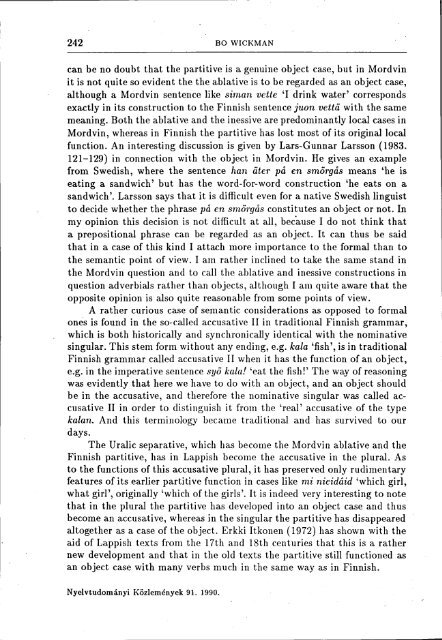

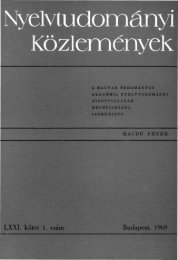

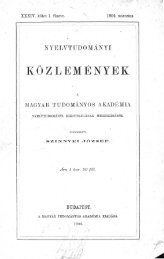
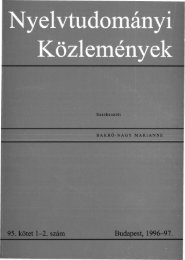
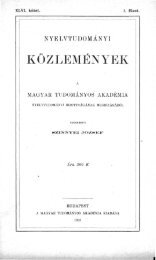
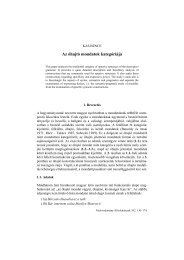
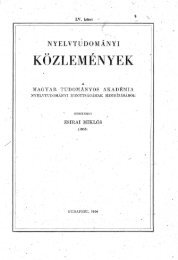
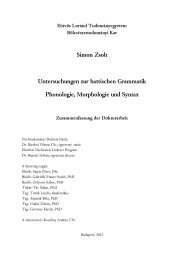
![Gósy Mária: A [p, t, k] mássalhangzók zöngekezdési ideje Bevezetés ...](https://img.yumpu.com/15682849/1/190x245/gosy-maria-a-p-t-k-massalhangzok-zongekezdesi-ideje-bevezetes-.jpg?quality=85)

